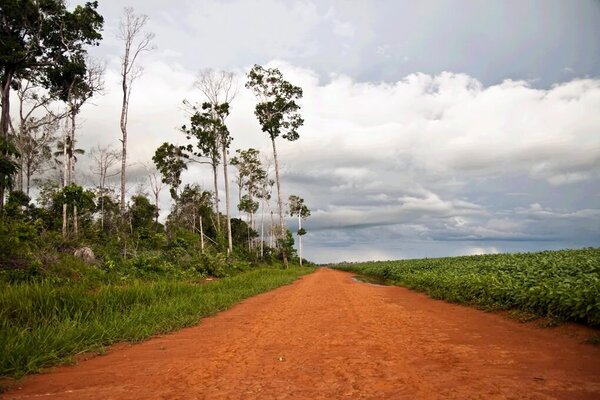Expertise
Sustainability certification of soy: The Round Table on Responsible Soy
Cordula Hinkes and Christina Handschuch
The enormous increase in the land under soy cultivation contributes significantly to the destruction of tropical forests. Can sustainability standards like the RTRS help to change this?
Soy is grown on an area of around 120 million hectares worldwide. By far the largest producer countries are the USA and Brazil, each accounting for almost 30 per cent of the global soy cultivation area with around 36 million hectares (USA) and 30 million hectares (Brazil). In Brazil and other South American countries, the enormous increase in land under soy cultivation in recent decades has contributed significantly to the destruction of tropical forests and other valuable ecosystems.
Against this background, a number of sustainability standards for soy cultivation have been developed that consider not only ecological but also social criteria. A study by the Thünen Institute has analysed various certification systems for soy and compared them against each other with regard to their criteria.
The best-known and most widespread sustainability standard for soy was developed by the Round Table on Responsible Soy (RTRS).
In addition to the protection of forests and other natural ecosystems, the RTRS standard also includes other ecological and social criteria, concerning for example pesticide use, biodiversity, climate protection and workers' rights. Since more than three quarters of global soy production is used as animal feed, the RTRS standard functions as a business-to-business standard and is thus largely invisible to end consumers. In 2019, 264 producers who grow soy on 1.1 million hectares were globally certified under RTRS. Most of the certified area is in Brazil (80%), followed by Argentina (15%) and Paraguay (3%).
A common criticism of the RTRS is that agribusiness participates in the development of the standard's criteria. Some NGOs have withdrawn from the RTRS already in its initial phase accusing the certification system of not sufficiently listening to their suggestions and objections. Another point of criticism is that genetically modified seeds are not excluded according to the criteria.
Proponents of the RTRS, on the other hand, argue that only a multi-stakeholder process involving the agricultural industry is capable of establishing a generally accepted minimum standard.
In addition to the criticism of the certification criteria, the more fundamental question arises whether a soy certification system can at all contribute significantly to the protection of tropical forests and other natural ecosystems. In Brazil only 3% of the land under soy cultivation is certified according to the RTRS standard. However, to prevent the conversion of natural ecosystems into farmland, certified soy would have to be the norm, not the exception, on the world market.
In the EU, efforts are being made to increase the share of domestically grown protein crops while importing only sustainably produced soy. In 2015, Germany and other EU countries made a voluntary commitment to deforestation-free supply chains in the Amsterdam Declaration. In the German Forum for Sustainable Protein Feed (FONEI), which is funded by the German Federal Agency for Agriculture and Food (BLE), different actors in Germany have committed to sustainable, deforestation-free soy supply chains. However, increasing demand for certified soy from the EU will only have a limited effect, as almost 60% of global soy exports are sold to China.
The 5 largest soy producers worldwide
Country | soy production in million tonnes | share of global soy production |
|---|---|---|
Brazil | 114.27 | 34% |
USA | 96.79 | 29% |
Argentina | 55.26 | 17% |
China | 15.72 | 5% |
India | 13.27 | 4% |
Global | 333.67 |
The 5 largest soy exporters worldwide
Country | soy exports in million tonnes | share of global soy exports |
|---|---|---|
Brazil | 74.07 | 48% |
USA | 52.39 | 34% |
Argentina | 10.05 | 6% |
Paraguay | 4.90 | 3% |
Canada | 4.01 | 3% |
Global | 155.39 |
The 5 largest soy importers worldwide
Country | soy imports in million tonnes | share of global soy imports |
|---|---|---|
China | 88.59 | 58% |
EU-28 | 16.99 | 11% |
Mexico | 4.85 | 3% |
Argentina | 4.55 | 3% |
Egypt | 4.26 | 3% |
Global | 151.71 |
The 5 countries with the most RTRS-certified acreage
Land | Soy acreage in 1,000 Hektar | RTRS-certified acreage in 1,000 Hektar | share of certified soy acreage |
|---|---|---|---|
Brazil | 35,881 | 911 | 2.5% |
Argentina | 16,576 | 167 | 1.0% |
Paraguay | 3,565 | 29 | 0.8% |
China | 8,423 | 24 | 0.3% |
Uruguay | 966 | 10 | 1.1% |
Global | 120,502 | 1,142 | 1.0% |







